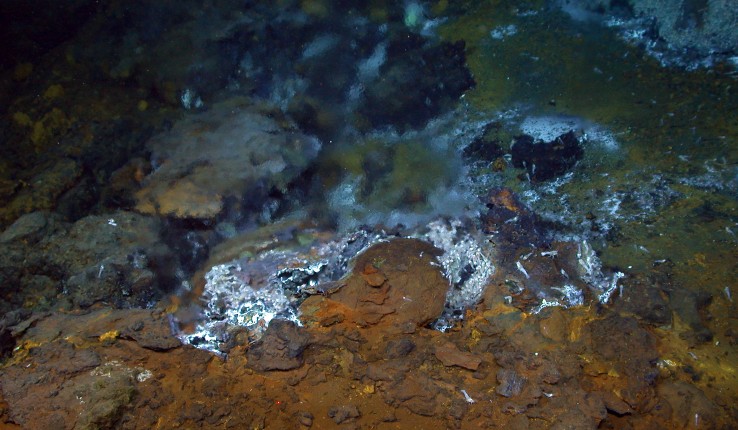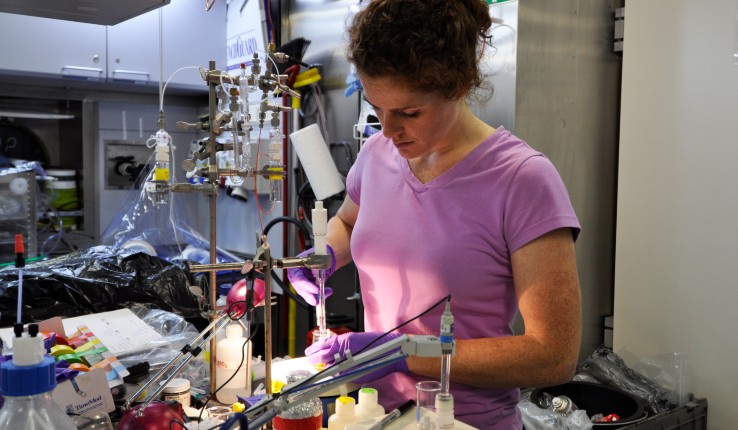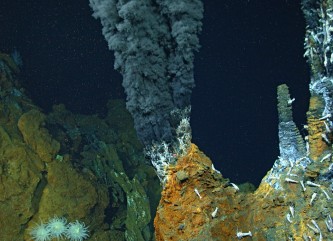Lead author Jill McDermott performing a chemical analysis called titration to analyze the hydrogen sulfide content of vent fluid samples onboard the R/V Falkor in 2013. (Julie Huber)
According to geochemist Jill McDermott, a professor in the Department of Earth and Environmental Sciences at Lehigh University, past studies of the chemistry of hydrothermal vent fluids have revealed reductions in certain gas species, such as molecular hydrogen. These depletions were thought to be caused by microbiological communities living in the shallow seafloor, collectively called the subseafloor biosphere.
However, results of a new study by McDermott and colleagues contradict that assumption. The researchers analyzed gas-tight hydrothermal fluid samples from the world's deepest known vent field, the Piccard hydrothermal field at the Mid-Cayman Rise, which is at a depth of 4970 meters, or about 16,000 feet below sea level. They observed chemical shifts in their samples, including a large loss of molecular hydrogen, that could only be the result of abiotic (non-biological) and thermogenic (thermal breakdown) processes, because the fluid temperatures were beyond the limits that support life―understood to be 122 degrees Celsius or around 250 degrees Fahrenheit, or lower.
The results were published online in an article “Abiotic redox reactions in hydrothermal mixing zones: decreased energy availability for the subsurface biosphere” in the Proceedings of the National Academy of Sciences. Additional authors include: Christopher German, Senior Scientist in Geology & Geophysics and Jeffrey Seewald, Senior Scientist in Marine Chemistry & Geochemistry and Sean Sylva, Research Associate III, in Marine Chemistry & Geochemistry from the Woods Hole Oceanographic Institution; and Shuhei Ono, Associate Professor, Massachusetts Institute of Technology.
“Our study finds that these shifts in chemistry are driven by non-biological processes that remove energy before microbial communities gain access to it,” says McDermott. “This could have critical implications for constraining the extent to which global geochemical cycles can sustain a deep biosphere, and for the global hydrogen budget.”
She adds “This also means the subsurface biosphere is likely receiving less energy than anyone had realized previously. The degree to which non-biological hydrogen consumption in the oceanic crust may reduce the impact of life inhabiting the seafloor is a great target for future studies."




